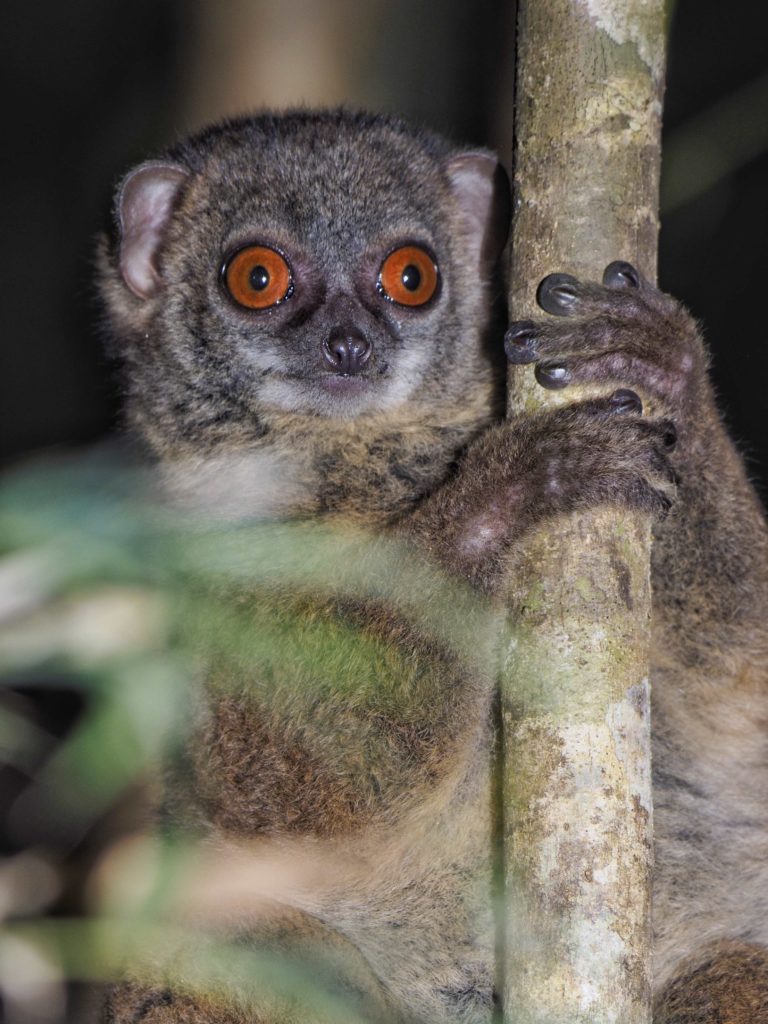Sahamalaza Sportive Lemur (Lepilemur sahamalazensis)
This lemur is found only on the Sahamalaza Peninsula and inhabits primary and mature secondary forests. Habitat loss is one of the main issues affecting the population numbers of this species and it is thought that less than 3000 now remain in the wild.

The Sahamalaza sportive lemur is a nocturnal lemur species with large orange eyes and is thought to be a solitary living lemur (Seiler 2012). During the day they can be found resting in tree holes and at night they will forage for food. Location of home ranges appears to be based on an abundance of sleeping sites and feeding trees as well as the density of trees and canopy cover (Seiler et al, 2014). They are folivorous but occasionally have been observed eating invertebrates.
This sportive lemur is classified as Critically Endangered by the International Union for the Conservation of Nature (IUCN) Red Data List as it has experienced a massive decline in numbers, demonstrating a population reduction of an estimated 80% over the past 21 years. This decline can be attributed to the loss of habitat and exploitation through unsustainable hunting levels, (Seiler et al. 2010, 2012).


